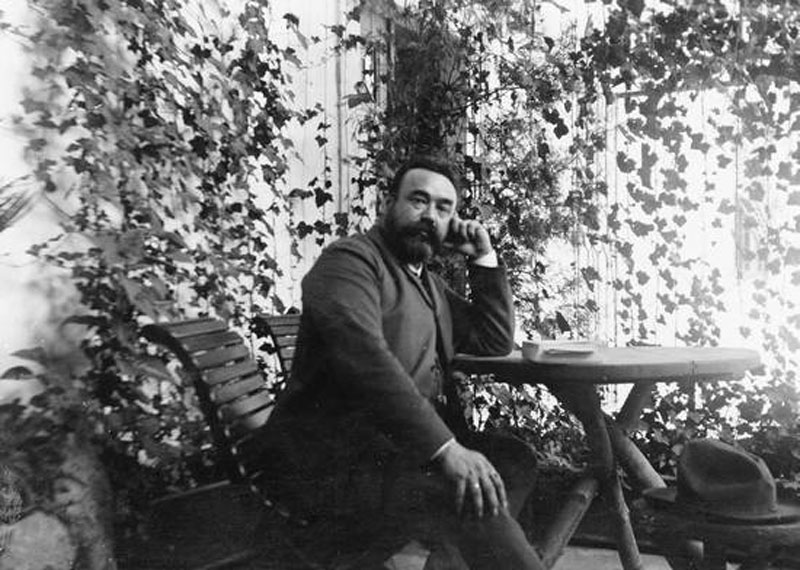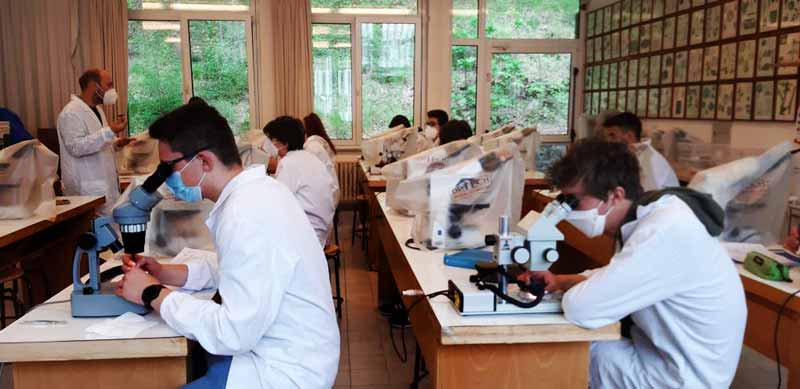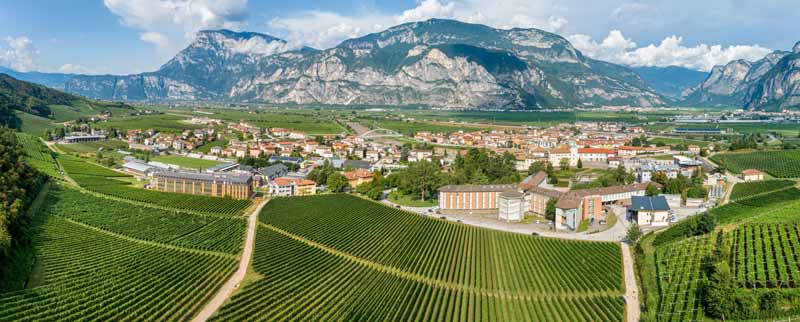Preface 2023
Preface – magazine 2023 A contemporary magazine feeds upon dynamism and vigour. It instantly perceives the inputs deriving from the readers and evolves, offering its best at...
Preface – magazine 2023 A contemporary magazine feeds upon dynamism and vigour. It instantly perceives the inputs deriving from the readers and evolves, offering its best at...
Discovering the educational and training activities of the Edmund Mach Foundation in San Michele all’Adige (TN) Excellence in the agricultural, food and environmental sectors. The...
Florence University of Arts – The American University of Florence FUA – AUF Architect, writer, entrepreneur and the art of cooking Florence – Walking in Via...
Every morning, on time, a few moments before dawn, which, in that region, smelled of thousands of woods, Sumio, who everyone in the village knew as “the Japanese”,...
In recent months, South Korea has risen against Beijing’s want to associate the pao cai speciality with its most representative and identifying gastronomic recipe based on...
The plague described by Manzoni arrived in Milan in the autumn of 1629, spreading gradually in 1630. In May of the same year, everything fell apart, so much so that people...
An interview with Alberto Tintori of OSCAR TINTORI VIVAI By Fiamma Domestici I have always nourished an unconditional passion for the noble citrus fruits of the Tuscan tradition,...
The Westernization of Japan: the Meiji Renewal With the expression Meiji Renewal (明治 維新), we indicate the radical change in the political, economic and social structure of Japan,...
4A Liceo scientifico (astronomico) – Gobetti-Volta, Bagno a Ripoli (Firenze)* The universe that revolves around food and Renaissance banquets has always had a link with the...
During the classic lunch breaks at the office, dinners with friends or Sunday brunches, how many times do we happen to think about the technology associated with the meal we are...
The subtleties of nature and health One of the most significant female figures of the early Middle Ages, Hildegard, lived along the Rhine River, in the tract that separates Hesse...
The history of the Edmund Mach Foundation began in 1874 when the Diet of the Austro-Hungarian region of Tyrol established the Agricultural Institute in San Michele all’Adige. The activity of this institution started following the approach of Edmund Mach, its first director. He had gathered strong experience as a researcher in agricultural chemistry and oenology.

A coordinator and innovator of great qualities, he played a fundamental role in highlighting the basic principles of setting up the school and experimental activities.
As an enlightened man, he understood that research and teaching must always constitute an indissoluble combination from which to extrapolate the premises for the growth of each sector. The operational principles he had laid out were carried out by his successors over the years when the Institute moved to the Province of Trento in 1919.
After Edmund Mach, many directors followed until Enrico Avanzi. He brought the Agricultural Experimental Station of San Michele on a par with the Italian university institutes. His work focused on cereals, fruit and the wine sector, and he collaborated with Rebo Rigotti, a talented researcher in the field of genetic improvement of the vine. Noteworthy is the autochthonous red grape variety that bears his name, Rebo.
We cannot forget Bruno Kessler. He will support the Institute to collaborate with similar institutes in Europe, especially in Bavaria, Germany, and Austria. Since the 1960s, 2,500 students have participated in several educational and linguistic one-month summer twinning.
Agriculture, food and the environment are the fields of action of the Mach Foundation, which holds training, research and technology transfer activities through three Centres, and production activities through an agricultural company, with the common goal of promoting sustainable farming, produce and defend ecosystems.
Today we talk about the educational offer of the FEM with the headmaster, prof. Ivano Artuso.
– Professor, can you outline the structure of the Education and Training Centre in the context of the Mach Foundation and its importance on the Italian and international level?
The Foundation operates on a 14-hectare campus. There are 110 teachers, over 1200 students, two hundred investigating researchers and technologists, seventy technicians and doctoral students. It consists of three centres: Education and Training Centre, Research and Innovation Centre and Technology Transfer Centre. As for the first one, we can say that it is the only agricultural school in Trentino with a diversified training offer. We have a five-year Technical school, which ends with the State Exam, and the Education and Vocational Training with three or four-year courses and the possibility of a fifth-year that also gives access to the State Exam.
In addition, a Department in our centre deals with post-diploma courses. In particular, the annual Oenotechnic Course, specialized in viticulture and oenology, open for 20/25 students. Two two-year Advanced Training Courses: the Higher Technical Course in Beverages (from beer to fruit juices, to tea, besides wine, the first course at a national level of high professionalism) and the Technician of the Green degree (for the management of public and private green). In addition, the Course for Agricultural Experts, an eight-hundred-hour course that allows access to the Register of Agricultural Experts, as it counts as an internship.
We also organize short courses of 20/30 hours, which change every year, such as the Tree Climbing course or Pruning tall trees course.
In addition, for adults only, the Trentino Environment Forests and Fauna Academy organizes training courses for those who need to get hunting or fishing licenses, as required by the Trentino Region.
Furthermore, a six-hundred-hour course to obtain the Professional License of Agricultural Entrepreneur.
The school runs a boarding school for one hundred and seventy students and houses a library, essential for students and researchers, with the historical archive of the Foundation. It is a nationally and internationally known Institute thanks to the feedback from the professional world, companies, and industry associations.

Statistically, over 60% of our graduates want to continue their studies, which is noteworthy.
The university average grade point is 27/30. Six months after graduation, our students sign their first employment contract, thus entering the professional field they have chosen. We also prepare students through internships, alternating school activities and work, inside institutions and six hundred companies affiliated with us, even abroad.
It is a unique training chain in Italy and presumably at an international level, divided into secondary technical education, vocational education and training, high school education and degree course in collaboration with the University of Trento.

– Another flagship is your farm, which also supports teaching.
It is a practical field for school and work, an essential element for us. It supports research and experimentation activities and supports the didactic and formative life of the school.
The farm is the symbol of winemaking in the Province of Trento. It does not just carry out production and processing activities. It plays a supporting role in the experimental, educational and presentation projects conducted by the other centres of the Edmund Mach Foundation. The usable agricultural area of the company is approximately 120 hectares, in addition to 80 hectares of woods. A dozen corporate bodies, located in one of the most renowned areas of Trentino, take care of our land. There are two units: Cultivations and Cellar (with the Distillery annexed).
We can safely say that the EMF is unique on a national and international level. A future on the rise thanks to its quality and innovation, the Trentino and Italian excellence looks at high-level projects and engagements.
NICOLETTA ARBUSTI